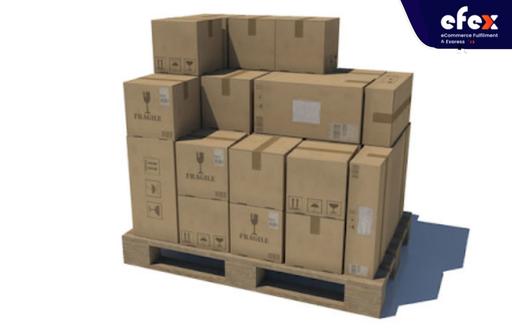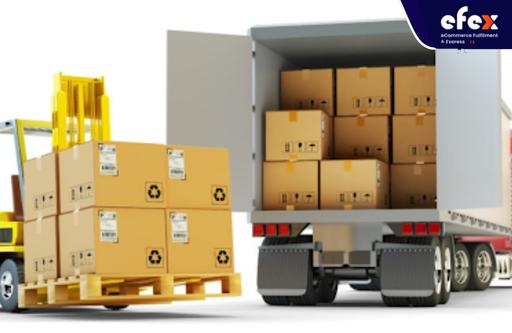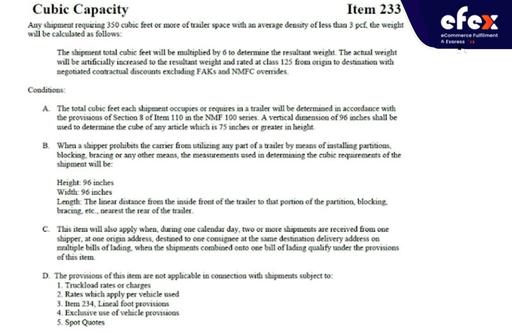
You may have seen some odd numbers and figures if you've been going through your old LTL shipping bills. Such logistics companies regularly utilize a variety of terminology and jargon, making it very difficult for clients to understand what they are stating. Are they merely deceiving us in order to tack on more fees? The "minimum cubic capacity rule" is one metric that might have confused you. This is a surcharge categorization that will occasionally emerge, but it is a real thing, and when you comprehend what it is exactly and how it operates, it's truly a fair charge to apply.
The phrase "cubic capacity" is only used in North American LTL trucking. To properly counter extremely lightweight, fluffy shipments that occupy more than their fair amount of a trailer, it establishes limit cubic capacity rules.

Unless the overall shipment is more than 750 cubic feet and also has a density of fewer than 6 pounds per cubic foot, most LTL carriers' cubic capacity requirements do not apply. Indeed, there's a trick here.
In fact, most carriers have their own unique cubic capacity rules. Some carriers even offer 350 cubic feet of space. The carriers will apply significant extra cubic capacity costs to your freight charge once your shipment exceeds the cubic capacity rule.
The Cubic Capacity Rule is not fixed, which is an important point to keep in mind. Before scheduling shipments, always verify with your carriers to be sure you won't be subject to these fees.
👉 Read More: What Is Buffer Stock: Example And Advantages
👉 Read More: Carton Flow Rack Systems: Divider, Dimensions
👉 Read More: Cube Utilization: Formula and Calculation
After explaining the cubic capacity rule, the following advice will help you avoid such fees.

After speaking with your carrier and getting clarification on the cubic capacity regulations, you should ensure to accurately estimate your load. For accurate pricing, it is also essential to express the freight type, dimension, and weight clearly as well as the cubic feet dimensions. Use the trusted height, width, and length formula to calculate the cubic feet.
There are certain carriers who strictly adhere to their cubic capacity regulations, while there are others that are a little more lenient. Make sure your package exceeds a cubic capacity limit to entirely eliminate that "gray area."
This information is recorded on a Bill of Lading whenever you call a carrier to request a shipment quotation. An area where several carriers frequently use their "creativity" to "modify" their cubic capacity limits. You might be paid a cubic capacity violation fee if the volume of your freight is larger than what was specified on the BOL.
Certain carriers impose the Extreme Length Fee if the shipment length is more than 12 linear feet. Unfortunately, this fee is generally more than the cubic capacity charge. If you find yourself in the difficult situation of having a shipment that is less than 750 cubic feet and subject to the cubic capacity tax, ensure that it is not over 12 linear feet so you don't incur a double-dipping fee.
We will make it clear what to look out for using Cubic Capacity through an XPO example: The cubic capacity regulations are now being enforced by XPO across all tariffs. This implies that the weight calculation for shipments needing 350 cubic feet or more of the trailer and an average density of not more than 3 pcf will deviate from the actual weight.
Therefore, It won't matter how much you weigh! You could see that the number of skids of LTL that can be shipped if the density is less than 3 pcf is severely constrained since 350 cubic feet of the trailer is equivalent to about 5.46 linear feet of the trailer.
For instance, the cubic capacity for 2 LTL pallets would be determined as follows. Keep in mind that the carrier does not consider the potential height of the shipment when calculating the cubic capacity; rather, they utilize the exact height of the trailer (96"): One skid is (40" x 43" x 96")/1726 cubic inches per cubic foot, or 95.67 cubic feet, multiplied by two skids, or 193.34 cubic feet.
As you can see, this is much below the 350 cubic foot limit, thus we are good to ship with XPO. Four skids would need to weigh at least 1161 lbs each for us to transport them as a typical LTL cargo without any issues. 386.68/1161 pounds = 3.0 pcf. The exact quote from the XPO rules tariff is provided below:

👉 Read More: 3PL Warehouse Services: Benefits And Offers
👉 Read More: All Cost To Rent A Warehouse In 2023
Finally, dealing with an experienced 3PL can help you avoid extra costs if your logistics program frequently calls for shipments that are light or less than 750 cubic feet or nearly equal to the cubic capacity rule for most carriers. Experienced third-party logistics companies, such as EFEX will assist you in managing all facets of your logistics plan and in negotiating lower rates for those 'close' shipments. Hope you have a good time with Efex.
